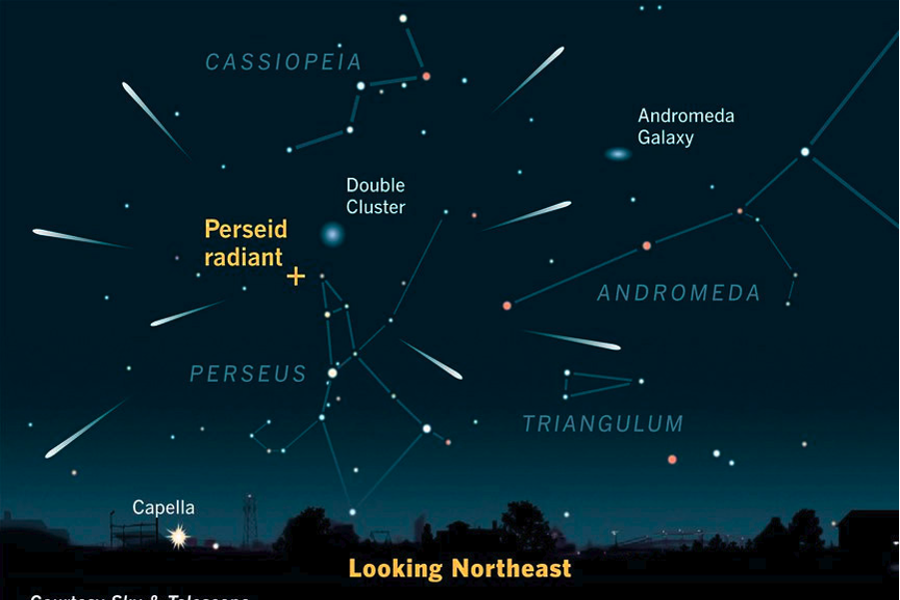One of the brightest meteor showers is taking place next week. About 150 meteors per hour are expected during the Perseid Meteor Shower. It will be visible from Earth only if the weather permits it.
A Perseid meteor shower produces about 80 to 100 meteors per hour. The best moment to watch this spectacular event will be on August 11 and August 12. During those nights the moon will be about three-quarters full.

“The increased number will be canceled out by the bright moon, the light of which will wash out the fainter Perseids,” said NASA meteor expert Bill Cooke.
One of the best events of the summer
This could be one of the best astronomical events of the summer, along with the total solar eclipse that will take place on August 21. The Perseid meteor showers occur every year when our planet passes through the cloud of debris produced by the Comet Swift-Tuttle. When they are in space, those particles are called meteoroids. Only after they enter the Earth’s atmosphere, they are considered to be meteors.
The meteors of this shower are tiny. They are just particles of dust that are left by the comet when it orbits around the Sun. These small particles go at a speed of 132,000 mph. They disintegrate soon after they enter the Earth’s atmosphere, creating a brilliant flash of light.
The Perseids meteor shower is an event that can be seen in the warmth of summer, different from the nights when the Leonid or the Geminid meteor showers occur in November and December, respectively.
The peak nights to see the Perseid meteor shower will be on August 11 and 12.
“This major shower takes place during the lazy, hazy days of summer when many families are on vacation,” EarthSky.org Bruce McClure said.

Meteor showers are named after the constellation they appear to come from. The Perseus constellation is in the northeastern portion of the sky, to the left of the Pleiades constellation.
This is not the best Perseid meteor shower in history
This year, Perseids will be very bright; but according to NASA, it won’t be the most brilliant meteor shower in history, though the meteor rate is expected to be higher than usual. These meteor showers produce 80-100 meteors per hour. However, the best Perseid meteor shower took place in 1993 when it reached 300 meteors per hour. Last year, it produced about 200 meteors per hour
However, nothing can surpass the meteor shower that took place on November 12, 1833. That year’s Leonid meteor shower is believed to be one of the greatest in the history of the U.S., at a rate of 20 to 30 meteors per second.
To see the meteor shower next week, you don’t need special equipment, just some patience.
“Remember, your eyes can take as long as 20 minutes to truly adapt to the darkness of night,” McClure said. “So don’t rush the process.”
Source: USA Today
